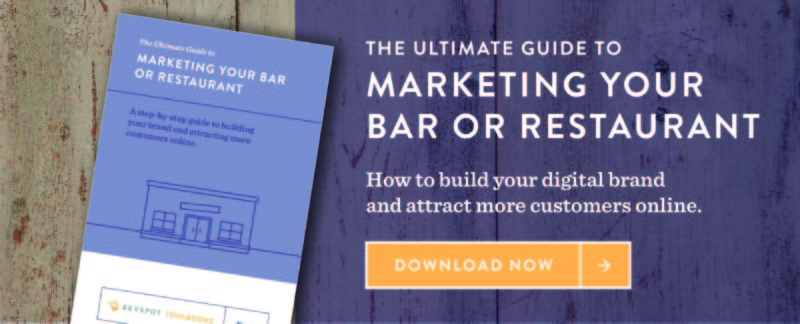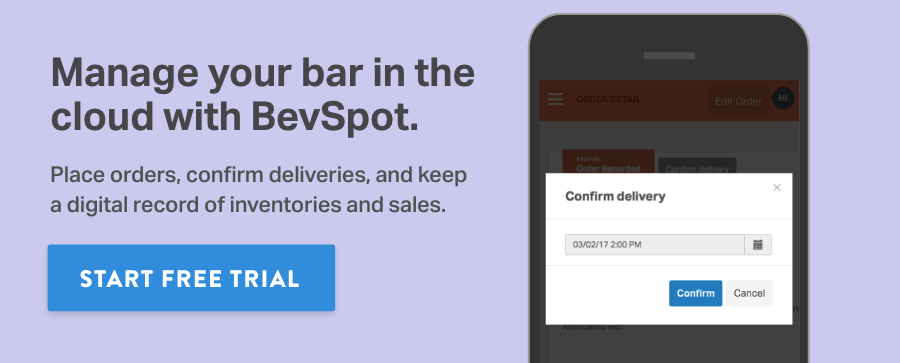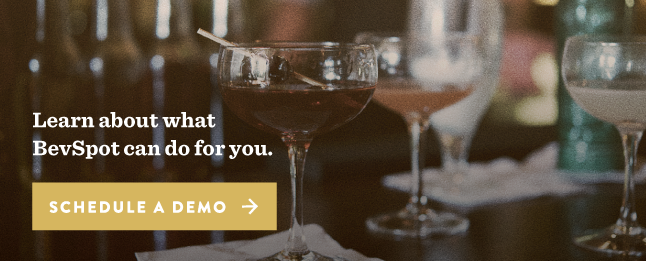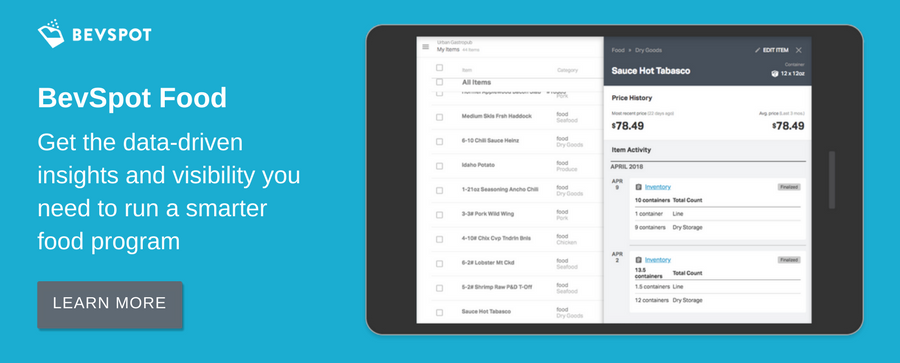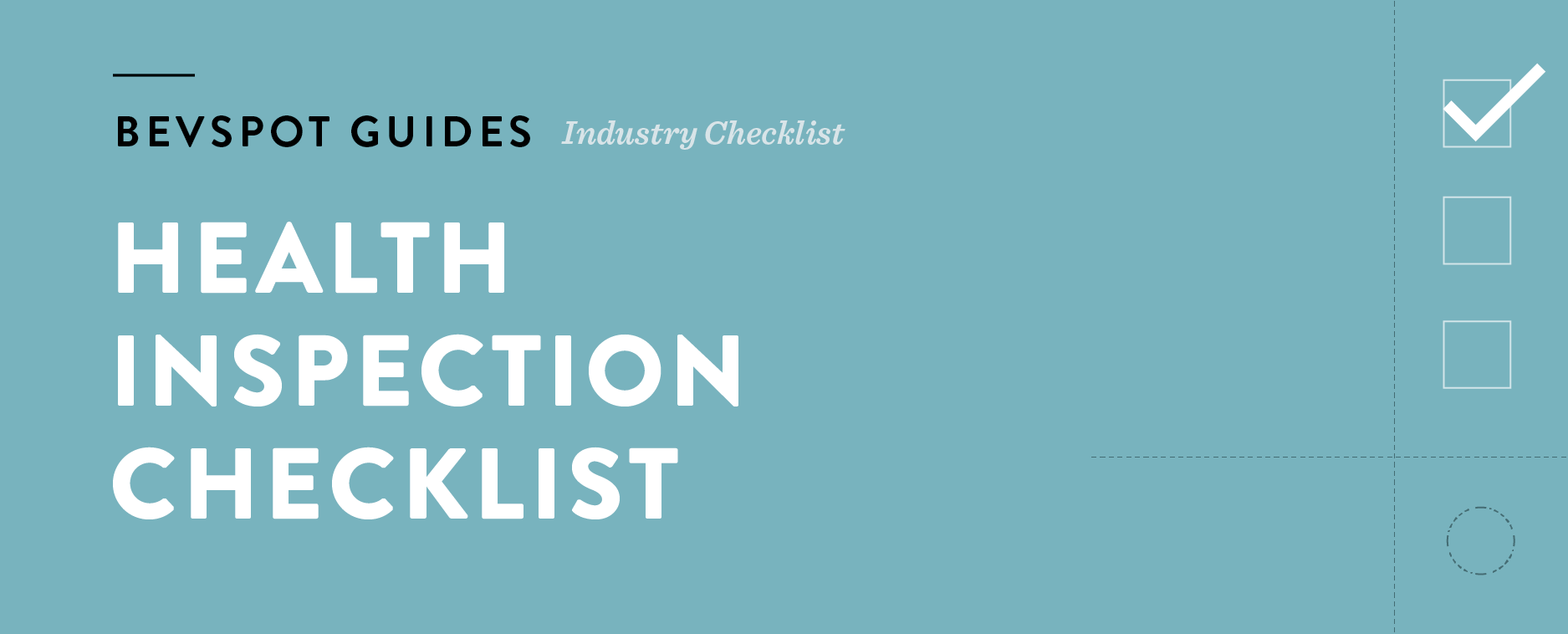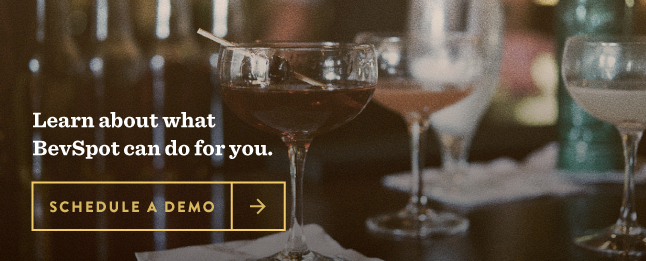5 Common Challenges for Bar and Restaurant Owners
Here are five common challenges that often send bars and restaurants down the wrong path.
Let’s say you’re running consistent profit margins each month and seats are usually full. Business is good. But maybe your bar or restaurant concept seems a little stuck. your having Challenges Bar and Restaurant Owners face, and you’re not quite sure how to get that momentum going again.
Hovering at a standstill and not being able to understand why is a terrible feeling. You know something about your restaurant isn’t working—you’re just not sure what it might be.
There are several reasons why businesses get stuck in these stagnant periods. And, when you’ve worked with restaurants long enough (like I have), you start to see patterns: patterns of success, and patterns of failure.
Sometimes you just need better quality questions to identify these challenges and give you the spark you need to get your bar managing back on track.
Does your menu reflect and enhance your brand?
In this industry, most people tend to be on the creative side. Having a team of staff like this can be both a blessing and a curse—especially when creativity gets out of hand. Creating new menu items is the fun part, but making sure you’re not just being creative for the sake of being creative is the challenge.
Your menu is one of your best marketing tools. It’s one of the first things a guest sees on your website, and it sends a message about who you are, what you do and how you do it.
Your menu’s message must be clear, concise and consistent. Some restaurant owners might think their food and drink menu is eclectic, but to many guests, its wide and strange variety is communicating a lack of focus and theme. Let’s face the facts: If you don’t know what you’re selling, how will your guest know?
Generally, it’s far better to be outstanding with a smaller, more focused menu than to be average with a large variety menu. Guests today expect good food and drinks. Good is the average, and if you want to succeed, you have to be better than that.
Are you marketing effectively, or serving up the same old stuff?
Go on Facebook and take a look at some of the posts published by other restaurants in your market. Do any of them stand out? Do they grab your attention? Some establishments are producing some impressive and attractive stuff online, but most restaurant marketing is pretty stale.
The majority of restaurants tend to post the same thing: An advertisement of their latest special or featured menu item. They often project an “all about me” mentality, which isn’t the right way to interact with customers online or face-to-face.
If your restaurant or bar is in a large market, think about all that noise being generated on social media. People become desensitized to the standard posts that talk about whatever food or drink specials are going on today.
To market effectively, you need to first understand the ground rules of social media. It’s all about communication, which is not a one-way street. There has to be dialogue, an exchange or even banter. Communicate with your guest, not at them. So, back off the relentless sales pitch every time you post. Mix it up, and show the human side of your brand. Be funny, edgy, charitable or educational.
Are you using inventory to maximize profits?
It is truly shocking how many bars and restaurant owners don’t conduct a regular and thorough food and beverage inventory. This is hospitality management 101. You must take inventory of your products if you want to maximize profitability—there’s no way around it. Inventory is not a should-do, it’s a must-do.
Not only do you have to count your food products, either weekly, bi-weekly or monthly, you must take liquor inventory, too. Inventory counts are crucial to running a profitable beverage program, to being able to compare your usage to the products that were actually sold, and to identify things like product popularity and shrinkage. Without the inventory counts, the rest of your bar’s numbers won’t represent the whole picture.
Today, bar management software companies make inventory pretty easy, so you really have no excuse why you shouldn’t be conducting inventory on a regular basis.
Is your staff focused on the guest?
This might be better phrased as “do you focus on the guest?” In any business, great culture is created by the owners and management; it flows down, not up. Culture is a living thing you must nurture and tend to like a garden. You also need to be aware when the weeds pop up, or before you know it, they’ll take over.
Your team will model your behavior. Are you setting an example of the standards for your guest’s experience? Are you effectively teaching your staff what this means at your establishment? Do you ever talk or complain about the guest in front of your team? Are you teaching a lesson of what to do, or more of what not to do?
And also, are you hiring people who are capable of a hospitality mindset, or are you just trying to fill the schedule? Always hire for personality over skill. You can train skill, but it’s hard to change someone’s personality.
Someone asked me the other day, “That restaurant always has the friendliest servers and bartenders. I wonder what their secret is?” Do you want to know their secret? They hire friendly people. There’s no real secret to hiring. Sure, you might ask some behavioral-based interview questions that go beyond the standard ones most managers and owners use, but in the end, you just need to hire the right people. It’s hard to turn a lamb into a lion, or to force an outgoing personality onto an introvert.
You must ensure you’ve developed sufficient training programs to empower these employees to properly serve your guests.
Are you the leader or the boss?
Owning and operating a bar isn’t easy. It’s not just walking around, organizing your staff and talking to a few tables now and then. Oh, if only it were that easy.
Anyone can be the boss, and poor ownership and management skills might work in the short term, but everyone has a breaking point, and sooner or later you’ll start seeing your staff leave one by one.
Leadership is where it’s at. Leaders inspire. Leaders challenge. Leaders build trust, and trust builds teams. It’s impossible to build a team with the boss mindset. It’s only when you evolve into an authentic leadership role that teamwork will begin to form.
If you want to own a better restaurant or bar, if you want to overcome these challenges every day, you need to ask yourself better quality questions. Instead of “what can my staff and guests do for me?” you need to reframe that and ask, “what can I do for them today?” Remember that your business is a reflection of you.
Schedule 15mins to chat with a product specialist
Start a FREE Trial Today! BevSpot offers full product education and account setup for all customers! No card Information needed!
Customer Stories: Seabear Oyster Bar on Adjusting to a New Bar
Seabear Oyster Bar is a lot of things to the people of Athens, Georgia.
It’s a small, lively yet intimate neighborhood haunt. It’s a restaurant where you can find some of the freshest local and sustainably sourced seafood. It’s a bar where you can enjoy the company of your friends and family alongside a refreshing beverage. It’s the sister location of the high-end Mediterranean concept The National, which you can also find in Athens.
What Seabear is not is Hunt Revell’s first foray into the world of overseeing a bar. Carving his bartending chops at The National, Hunt was making the transition to his new bar program and faced a dilemma. He quickly realized that he didn’t have a lot of experience managing the financial details of a bar. Also, he did not want to waste hours in the office working the inventory numbers on a spreadsheet when he could be improving the bar program.
BevSpot was the tool Hunt looked to to get over these obstacles. After getting onboarded into the system, Hunt saw immediate improvements in Seabear’s sitting inventory as well as a more efficient ordering process with his vendors. Arguably, the most important benefit that Hunt saw, as a working bar manager, was the freedom to focus on making the most out of his shifts on the bar.
“[BevSpot] lets me do my night job without a bunch of hassle on the other end. It allows me to maximize the amount of money I can make personally and use my time the way I want to.”
See how BevSpot helped Hunt get the most out of his bar.
The Story of Tales of the Cocktail: Paul Tuennerman, Part 1
(Photos courtesy of Jennifer Mitchell Photography.)
No matter who you ask, the annual festival that celebrates modern cocktailing known as Tales of the Cocktail holds a unique feeling of venerability in the industry.
The most respected bartenders from across the country will often take some of their precious time off to make the pilgrimage to New Orleans whenever the opportunity arises to take part in the festivities there. Bartenders who are recognized at Tales of the Cocktail are also often held with the utmost admiration within the industry.
This wasn’t always the case, though. In an exclusive three-part interview, BevSpot had the chance to chat with Paul Tuennerman, or, as some like to call him, Mr. Cocktail. One of the co-founders and driving forces behind the success of Tales, Paul recounts to us the history of the festival and its journey forward.
In the first part of our interview, we cover the origins of Tales of the Cocktail and some of its early challenges.
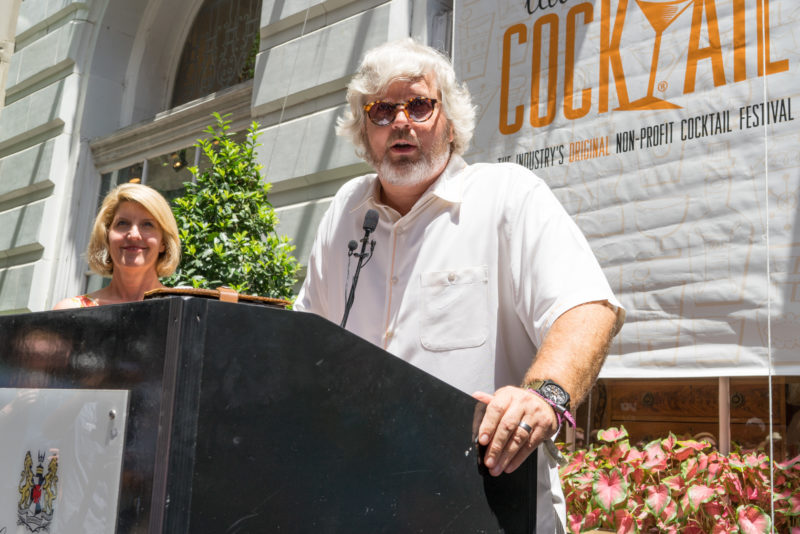
BevSpot:
How did the idea for Tales of the Cocktail come about?
Paul:
It all started with Ann. She had never tended a bar and was never remotely associated with the hospitality industry. She worked in television and radio, specifically in advertising. But Ann has a tremendous love and appreciation for New Orleans. In 2002, she felt like people needed a walking tour of New Orleans’ historic bars and restaurants.
At that time, there wasn’t really anything there that celebrated the history of New Orleans in that industry. So, with another gentleman, Ann curated the walking tour. In 2003, as all good marketing people will do, she put together a media event to celebrate the first anniversary.
Social media wasn’t very prominent back then, so Ann had to do most of the legwork herself. She managed to convince those who are now some of the forefathers of the [modern] classic cocktail to show up: People like Dale DeGroff, Jared Brown and Anastasia Miller, who I sort of blame for this modern classic cocktail resurgence.
It was really just a cocktail hour in the backroom of Hotel Monteleone—just about 50 people. She had an opening event and a closing event. Everyone had such a good time, so Ann thought we can do this again next year. In 2004 and 2005, she added a couple of spirited dinners and one or two seminars.
Who financed Tales back then?
Up until that point, Ann had a sole sponsor for Tales. In 2005, the week after Tales, Katrina hit. I don’t really have to explain that. She evacuated to New York and then came back to New Orleans in December. She went right back at it and tried to keep Tales alive while working at an agency.
I met her in January of 2006. Very early on in our relationship, she found out that her sponsor wasn’t paying their bills. I lent her some money in return for showing me her contract with them. We found out that the sponsor had violated the contract and, through arbitration, we settled. Thankfully, what we got out of it was the rights for the event. They thought that no one would go back to New Orleans after Katrina, and that it was finished.
So, we ended up having to refocus how we did business. We went from a single-sponsor model to trying to find anyone who would give us a nickel. We took out two lines of credit and we maxed every credit card we owned. And, in 2006, it was a successful year for the event. We had about 2,000 attendees and the industry really showed up to support us. Since then, we’ve just grown in scope and size year over year.
Why do you feel like the cocktailing community came around you in your time of need?
When you look back, I don’t think you can ever really nail it down to one certain thing. I will tell you a couple things that contributed to our success. Firstly, I’ve always said that this is the industry’s event, and we just facilitate it. We have always had committees of people from the industry who select seminars and cocktail apprentices and work very closely with the event.
We also do a tremendous amount of focus groups. Ann and I will travel and sit down with groups of folks from the industry—media, bartenders and suppliers—and just get their feedback to use moving forward.
In 2006, we had what was called “The Playbook.” It was a giant binder that outlined what we were doing at the event. What we do every year is throw that binder away and start over; we basically start from scratch every year. It’s always fresh content, so it never goes old. Ann and I have always been willing to look at everything. We never say no. People come to us with seemingly crazy ideas, but we look at them.
What were the main challenges you faced as you built that base within the community?
There were a bunch of challenges. Every day there’s a challenge with money. Ann and I subsidized the event ourselves through 2008. It took us another three years to break even. So, we were working on a shoestring budget.
The industry is also very diverse. You have a lot of people specializing in different areas; you have a bunch of people who are very loud but represent a small minority. It’s about filtering through all of that and getting down to focusing on what’s important to your critical mass. It’s about sticking to your mission values. We’re not a five-day bar crawl. We’re not a trade show. We’re not a circus. We’re a networking and educational event.
Subscribe to the BevSpot Blog below to see the next two parts of this interview series, where we talk to Paul about how Tales of the Cocktail has grown and expanded over the years as well as how he sees the festival growing in the future.
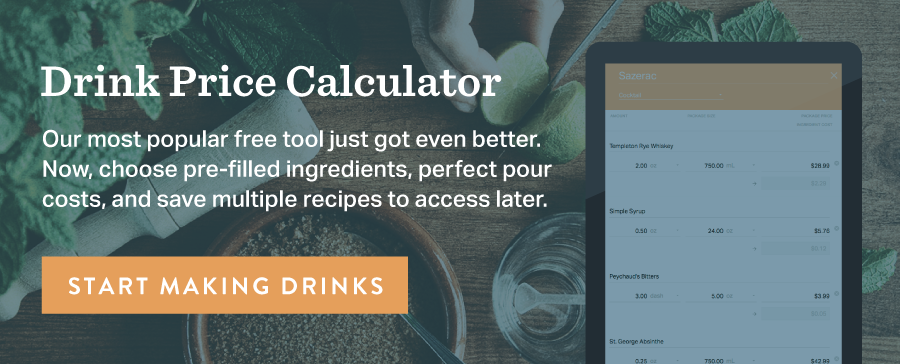
Essentials of Bar Design: Erica Diskin of Assembly Design Studio
When designing or redesigning your bar, there are so many things to consider.
What kind of look are you going for when starting your bar design? How many tables should you have on the floor? What kind of material would be best for your bar top? What does your local market want in a bar?
Unless you already have a lot of experience in the fields of design and architecture, you might need to look for outside help to answer these questions. And Erica Diskin might be one of those people you end up reaching to. She and her husband Michael run Assembly Design Studio, a Boston-based firm behind the design of many popular bars and restaurants in the city, such as Loco Taqueria & Oyster Bar and Capo Restaurant.
BevSpot recently had the opportunity to sit down and chat with Erica about her philosophy for bar design and her personal method for working with bar and restaurant owners to achieve their dream looks.
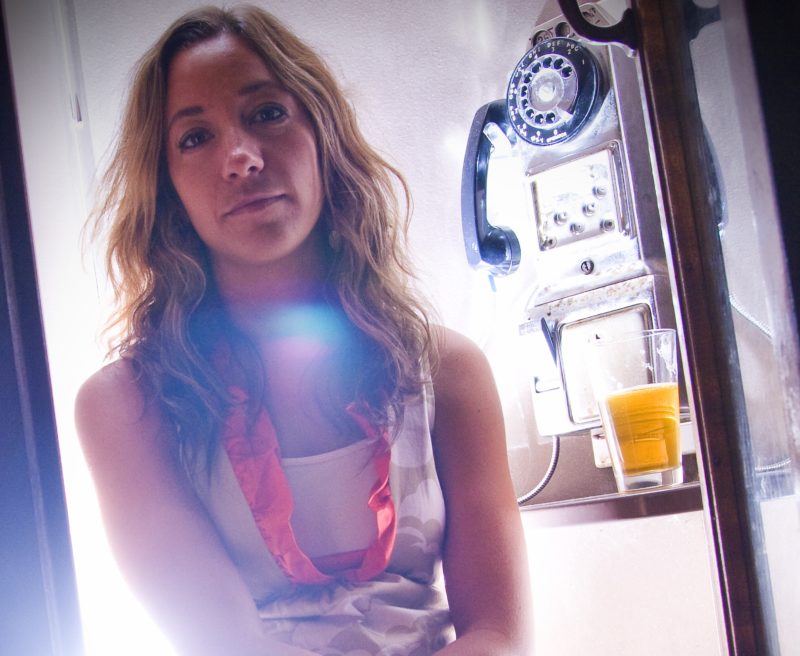
BevSpot:
How would you describe your typical process of working with a client to develop the design of their bar?
Erica:
Honestly, the most effective and fun way to get a feel for what a potential client likes is to go and sit at an actual bar with them. Develop a short list of interesting eventual competitors and old favs of theirs, and go on an adult field trip. Sometimes this requires travel to another city. But this approach gives you the chance to discuss specific things you think work—and don’t work—while getting a chance to see how the person hiring you likes to enjoy a bar.
What are the areas you believe are most important to consider when building a bar design?
Number one will always be functionality—from the standpoint of both a bartender and a customer. Your bar is almost always going to be the establishment’s most successful way to generate money. Anything that slows down the process needs to go. An oddly located speed rack or an overly wide bar top can add seconds and confusion to the drink-making process, which is annoying to clients and costly in the long run.
How would you describe your approach when brainstorming or working out a new bar design?
I like to do research. I’m a bit of a history geek, so when I’m awarded a new design project, I like to dig into the past so I can honor it in the present. Sometimes that history comes in the form of a building; sometimes it’s the town the restaurant is located in; or sometimes it’s a simple memory or experience that has become the chef’s inspiration. In any case, it’s a great place to start.
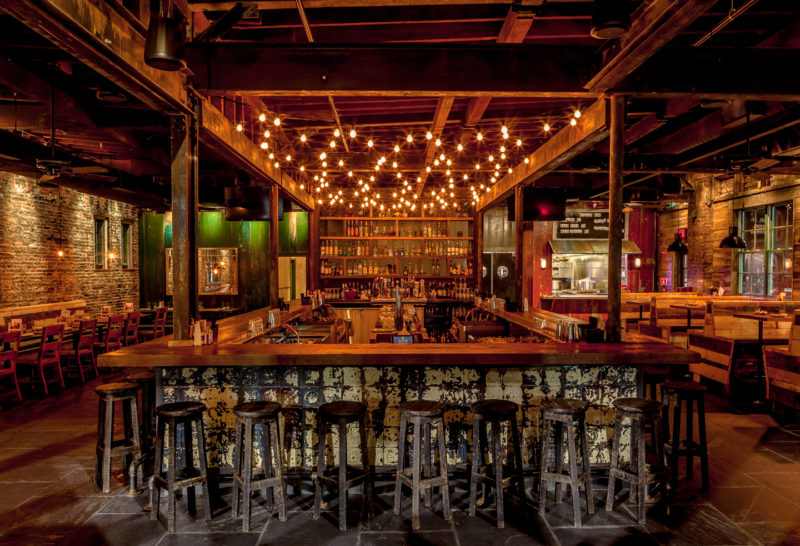
What do you feel is commonly overlooked in bar design?
The user experience. Too often people are overly focused on the creation of a beautiful bar to stop and think about how it will feel from the customer’s side. For example, cool, minimalist bar stools may look good to you, but they can be brutal to sit in—limiting the amount of time someone is willing to hang at the bar. While on the flip side, the easy addition of small things like hooks and power outlets to charge phones make your guests more comfortable.
What are some common missteps you see clients make when considering a design?
They leave too much space behind the bar. It’s a natural instinct, when building a bar, to want to give your bar staff plenty of room on a busy night to store and serve their wares. That makes you a good owner. But, the reality is, a tighter, perfectly-edited space works best. They only need what they need and nothing more. They’re like fighter pilots who shoot booze.
Do you see, or have any opinions on, any trends happening in modern bar design?
I’m kind of over the whole hipster speakeasy thing. But don’t get me wrong, I love a good dive bar. I just think a bar should be a place of relaxation and honesty, that trend lost its grip on both of those topics ages ago. I think we’re all heading toward designs that are less pretentious.
What advice would you give to new bar owners and/or people looking to redesign their bar?
Have fun and be original. Because, at the end of a long day, a “bar” can be almost anything, as long as it serves a good drink.
Check out additional current design trends and subscribe to the blog below for more bar management tips.
Schedule 15mins to chat with a product specialist
Start a FREE Trial Today! BevSpot offers full product education and account setup for all customers! No card Information needed!
Elevated Communal Dining: Alex Turnwall on Krakas Krog
Reggie:
What is a memorable experience you’ve had at a restaurant or bar?
Alex:
I recently went to this amazing little restaurant in the middle of nowhere, on the Swedish island of Gotland, in the Baltic Sea. A very intimate, cozy place, amazing decor. They were all about excellent service and locally sourced food—it was incredible.
Who did you go with?
My wife and family friends who were hosting us on our Swedish vacation. It was really awesome because we got to see Sweden from a local’s perspective. We had an eight-course meal that was made up of food-wine pairings of local Swedish delicacies.
How would you describe the decor of the restaurant?
It was basically my interior design preferences, in a nutshell. Typically Scandinavian with very neutral colors and natural materials. Everything was very simple and almost rustic but also had a modern touch. Reclaimed wood, concrete countertops on the tables. Very clean design elements with beautiful woodworking details in the furniture and serving dishes.
As a designer, I’m sure that was really appealing to you. Walk me through the meal. What were the courses like?
It was really cool. There was a lot of focus on quality local ingredients. Through our hosts, we learned about the seafood and locally grown berries and herbs, which are traditional to Gotland cuisine—here, we had modern takes on these traditional ingredients.
Very small bites on the first course. I don’t remember exactly what they were. There was some sort of seafood pâté and fish roe on these little, tiny crackers with vegetables/herbs that were wild and locally sourced. Each of the three bites was different: beautifully presented, and it tasted really unique.
I don’t remember every single course, but the chef came out and told us little stories about each one. I wish I would have taken notes!
The chef personally came out to talk to you?
At least one of the chefs did. If I got the story right, there was a couple that owned the restaurant. The hostess/waitress/owner and her chef (husband?) had little stories about everything that was served and the whole experience of the restaurant. I hope I got that right.
Interesting. They did it all in English, I’m assuming?
They did it all in English, just because two of us didn’t speak Swedish. Pretty much everybody speaks English there, which is incredible if you think about it. There were some specific words for different dishes or ingredients that didn’t specifically have a translation, so our hosts and the restaurateurs had some chatter in Swedish about the meal that was pretty funny to watch. We ended up Googling the English versions of some words, which didn’t exist—ha, so we all learned something.
Was there another course that really stuck out to you besides the first one?
The whole thing was really incredible. There was one course that specifically stood out because they asked if we wanted to be “adventurous” beforehand.
It was a cured steak that actually tasted very reminiscent of a smelly cheese like a gorgonzola or bleu. It was definitely an acquired taste because it smelled like it almost went bad, but I already like cheeses like that, and this taste was absolutely amazing. It was unlike anything I’ve ever had before. It was this amazing melding of beef, cheese and local vegetables. Perfectly cooked, very rare. Just a very unique flavor profile. I don’t remember what it was called, unfortunately (I was quite a few glasses of wine deep at this point.)
What was it paired with?
I don’t remember what that exact course was paired with—some type of robust red. I do remember that the owner of the restaurant had selected a bunch of wines from her travels in Italy and France specifically for each course. We had reds, whites and rosés, plus some sparkling.
This sounds a little like Fäviken. What was the pacing of the courses like?
It was the longest meal ever! It was this whole experience—everyone was just super knowledgeable and it was just immaculate service. Any time you needed anything it just appeared exactly when you were ready for it.
We were there for like five or six hours, but that might be because our hosts are very easy to talk to and made conversation with the owners, as well as with a neighboring table. It turned out the people we were chatting with included a food critic who was a friend of a friend with our hosts, and he was there writing about the restaurant with the head chef of another restaurant that is very famous in Stockholm.
Again, if I got my story right: The chef was there because the owners of Krakas had worked with and learned from her at her Stockholm locations.
How did it feel to dine in that kind of environment?
It was really cool how chummy everybody was and how informal and comfortable the environment was. We started out as just patrons of the restaurant, but, by the end of the night, everyone was sharing glasses of wine together and just chatting.
I feel like that’s the ideal scenario for a place like that.
I wish I could remember everyone’s name and I don’t know if I got all of these stories totally right!
We learned through our conversations that another concept that the owners manage is an ice hotel above the Arctic circle. They spend their winters up there I believe. We ended up sharing stories about skiing and ski touring and all the different ski places in Sweden and the U.S., because they are avid skiers and so are we.
It was just really fun to connect with people halfway around the world and find that you have some overlapping experiences. I like to think they knew they could be more adventurous with the food they were serving us because we were having really good conversations with them.
Is there anything else that comes to mind that stands out?
The presentation of all the dishes was really amazing. But I think the people and the story are the most important thing. They just invite you into their home, essentially. It is a small, intimate environment. And they are really knowledgeable. Actually talking to the people who are super passionate about this industry and who get to do what they love—those are the kinds of places I love to visit.
Do you think there are places around here that are similar?
This place was pretty unique. There are two that I can specifically think of that are similar but aren’t executed in the same way. One, Mezze, is in Western Massachusetts. It has the same kind of attention to detail and service, plus it’s sort of a journey to get there. They also have a focus on local, seasonal ingredients. The similarity is dishes that focus on the terroir of wherever you happen to be.
A farm-to-table concept, then.
Yeah. There was another one that had a similar tasting concept right here in Boston. That place that has really excellent burgers, right by Central Square…
Craigie on Main?
Craigie on Main. They do a similar tasting menu starting with very small bites, but you’re a little more removed. The chef sometimes comes out, sometimes doesn’t. There’s a larger staff there, too.
So, at Craigie, it’s similar to that feeling you had at the Swedish restaurant, but more expanded?
There’s more of a focus.
Craigie’s in the middle of the city. But it’s a whole journey to get to the restaurant I went to in Sweden. This place is on an island that you have to take a three-and-a-half hour ferry to get to if you don’t fly there. And then the restaurant is a three-hour drive from the main port/airport.
It’s in the middle of nowhere. It’s in the middle of farm country. You have to want to go to this restaurant. And, on top of that, it’s hard to get a reservation! They only take a handful of reservations a night to keep it very intimate.
The time it takes to get there makes the reward a little sweeter. And, for me, not being from Sweden makes sampling the local fare there just a little more special than it is here.
Check out Krakas Krog for yourself.
And make sure not to miss out on future guest stories by subscribing to the blog below.
BevSpot Booze News: The September Roundup
Welcome to the first edition of Booze News.
Reggie: Well, here’s a first for the BevSpot Blog! Let me introduce you to our new monthly feature. As your local content gurus, Rachael and I will be quickly running down five of the latest and greatest news and feature stories in the beverage and hospitality industry we found on the Interwebs during the past month.
Rachael: Things move quickly in the bar and restaurant industry, and it’s our job to keep you updated with information that’s valuable, informative and, of course, entertaining. Let’s see what we’ve got in September’s edition of BevSpot Booze News.
More Time for Overtime?
Reggie: In our focus piece, Restaurant Business Magazine put out an article detailing how 21 states have banded together to legally challenge the upcoming rule mandated by the Department of Labor that doubles the federal overtime limit. This has been quite a contentious issue in the world of hospitality.
Rachael: It has. These 21 states argue that the decades-old overtime pay laws did not intend for salary thresholds to determine who should and should not receive overtime pay. And, while these new rules they’re fighting against could give a much-needed wage boost to salaried workers in the hospitality industry, small businesses are clearly concerned about how the law will affect their bottom line.
Trends on Trends
Reggie: Another piece that caught our eye was a feature that Cheers put out on industry trends they’ve observed through polling done by their sister company, Beverage Dynamics. Some immediate takeaways: It doesn’t look like flavored whiskey (i.e. Fireball and its ilk) and craft beer are going away anytime soon.
Rachael: The overall trend we see here is that consumers continue to demand experimentation and learning in their alcohol consumption. “They want to know more about the background of what they’re drinking: the history, how it’s made, where it’s from and the people behind it.” Also, premium tequila is making a play for more shelf space, and cider and hard soda sales continue to rise.
Some Craft Breweries on the Rise
Reggie: Speaking of craft breweries, DRAFT Mag put out a feature with their list of 25 breweries (all having started in the past five years) to keep your eye on. All of the breweries are definitely up there in quality, and it was especially nice to see local favorite Trillium get a shoutout.
Rachael: We see some industry favorites and a few lesser-known breweries on this list, with a strong presence of Californian craft brewers. It’s interesting to see the prominence of sour and wild ales in this list, indicating their continued rise in craft and likely into mainstream beer consumption.
Remembering the Queen of Wine
Reggie: In some sadder news, Margrit Mondavi, wife of the late Robert Mondavi, passed away earlier this month. It was really nice to see the heartwarming response from the wine and SF culinary community in this Eater post.
Rachael: Sad news, indeed. Napa Valley would be a different place today if it weren’t for Mondavi’s leadership, which included “founding the Robert Mondavi Winery Summer Music Festival and the Napa Valley Wine Auction, restoring the Napa Valley Opera House, and endowing a performing arts center and a wine and food science center to UC Davis.”
The Upcoming Wine Revolution
Reggie: Lastly, we have some really interesting news coming out of Business Insider. Apparently, Ava Winery—the SF-based startup focused on creating synthetic wine—has made significant progress since their first public taste test.
Rachael: Co-Founder Alex Lee says they’ve made huge improvement since May and are now at the point where “about 90% of people fail our blind taste test.” Ava’s goal is to release 499 bottles later this summer, with plans to go to market with high-quality, sustainable, customizable wine (that’s cheaper than what’s created with traditional methods) in the next six-to-12 months.
That’s it for this month. Subscribe to the blog below to receive next month’s booze news roundup.
Any thoughts on the stories you see above? Leave us a comment—let’s chat.
Going Green (and Saving Money): Bar Sustainability
Almost by nature, bars tend to generate large environmental footprints.
Ryan Lotz of Bar Mezzana recently told us of the problems bars consistently face with significant wasting of water. And that’s not even taking into account the product waste if there is food involved at your establishment (there is only so much leftover food you can serve at a family meal). However, Ryan and other industry professionals we’ve talked to also stress the value of doing everything you can to improve bar sustainability and reduce the effect your bar has on the environment.
BevSpot had the chance to chat with the Green Restaurant Association, a Boston-based and nationally-recognized non-profit organization that has been working with bars and restaurants to educate and enable them in becoming more environmentally responsible.
Here are a few incremental steps they recommended you take for your bar that won’t cost you an arm and a leg.
Water, Water, Everywhere
As previously stated, water waste is a huge problem for bars. While it can seem extremely difficult to completely remove all water waste, there are steps you can take to reduce it significantly.
Installing low-flow GPM aerators to your sinks can help reduce the amount of water used without sacrificing water pressure. You can also see if your building supports recycled water or has a storage area to melt your ice in an ambient temperature at the end of the night.
This is a bit of a no-brainer, but if your bar offers water to its guests you shouldn’t do it with bottled water, says the GRA. Filtered tap water and/or seltzer water should be the exclusive water options. Not only will this significantly reduce the packaging usage of your bar, but also give you more direct control of the amount of water each guest will consume or waste.
Recycling and Composting
An easy go-to method for bars and restaurants to reduce their environmental footprint is recycling. This means having a bin or designated area for employees to place recyclables like plastic/glass bottles, aluminum cans, cardboard and paper.
Some examples of bar materials that could be replaced with recycling-friendly or compost-friendly versions, in order to optimize your program, are drink stirrers and straws. Beverage napkins that are 100% recycled, contain post-consumer recycled material, and are processed chlorine-free were also recommended by the GRA.
Installing a composting program can also radically decrease your environmental impact, especially if your bar serves food. With the sheer amount of food waste your bar or restaurant can generate on a nightly basis, a compost program will make sure you don’t have to watch it all go to a landfill in garbage bags.
Sustainable Design
If you’re building up a new bar or looking to tweak your current design, there are steps you can take to make the bar even more environmental-friendly. Energy-efficient bars should be looking into installing Energy Star-qualified undercounter refrigerators and LED lighting. You can also incorporate reusable coasters and chalkboard menus into the bar to boost sustainability.
One area of bar sustainability the GRA pointed out to us as often overlooked—especially if you are starting or redesigning a bar—is the decor. You might be surprised by how much of your bar could be fleshed out with reused or reclaimed/salvaged material without sacrificing the desired theme or atmosphere.
Being Organic
There are plenty of places in your bar program you can be sustainable in, as well. Looking into organic-certified alcohol and biodynamic-produced wine selections for your bar might be worthwhile if you’re looking to go above and beyond in decreasing your environmental footprint. You definitely might have some understandable reservations about boxing yourself into these selections, but they can be great selections to add depending on the concept of your bar or restaurant.
Another aspect of your beverage program you can add organic items to is your garnishes. It might cost a little extra to invest in organic lemons and limes, but it can make an often-underestimated improvement to your establishment’s ecological footprint. It can also be an interesting conversation starter for your bar staff.
These are just some of the steps the Green Restaurant Association recommends to bars and restaurants. If you’re interested, see what you can do to get their coveted Green Restaurant Certification.
For more info on bar management, keep it right here at the BevSpot Blog and subscribe below. And feel free to leave your own cost-effective tricks for making your bar more sustainable in the comments section.
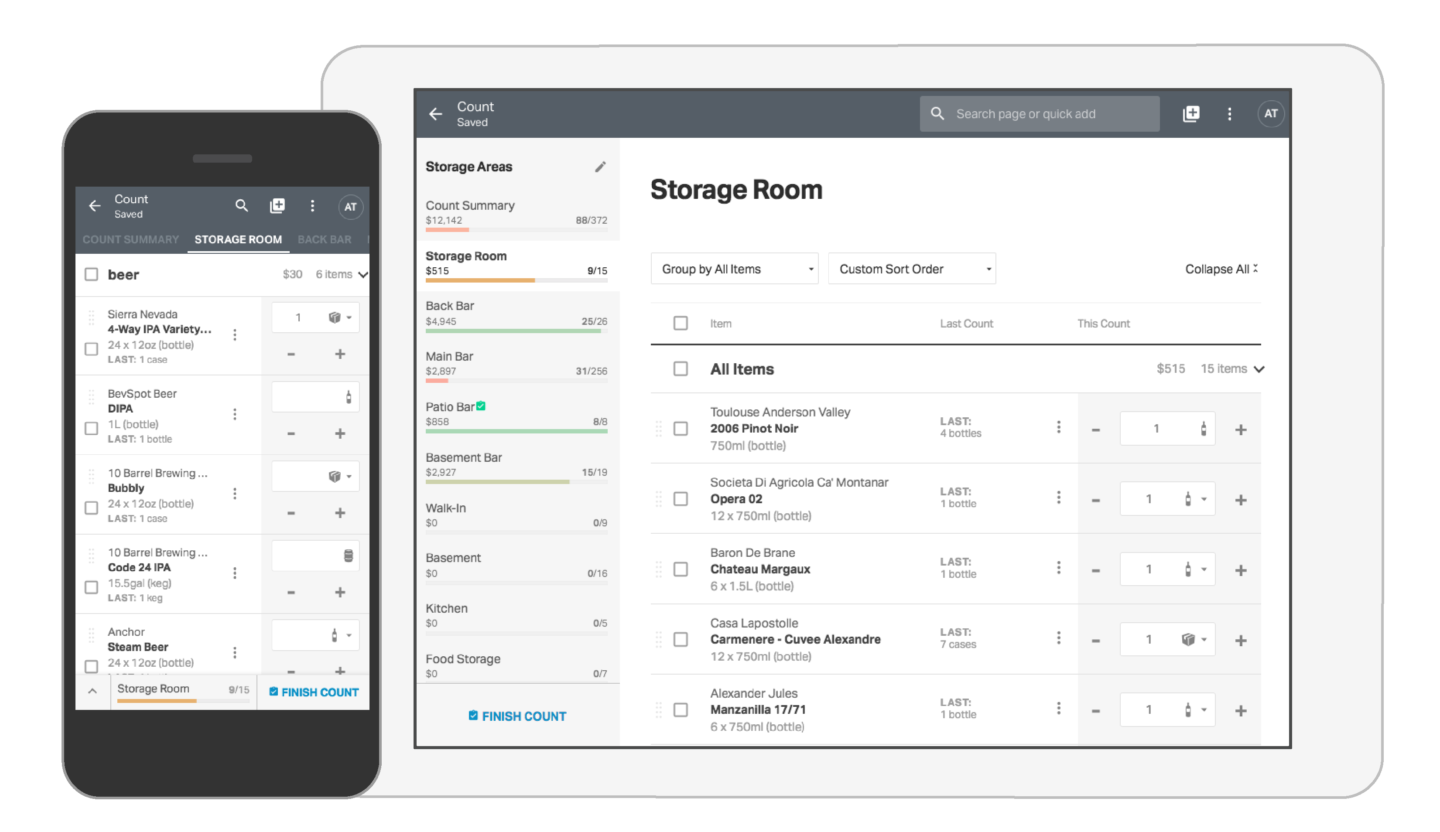
Schedule 15mins to chat with a product specialist
Start a FREE Trial Today! BevSpot offers full product education and account setup for all customers! No card Information needed!
The Future of Restaurant Design: 6 Trends in 2016
This article was written by Fabio Tantaro, the Director of Marketing at Specifi, a global foodservice specification platform. Since joining the team in 2011, Tantaro has used his graphic and design skills to deliver creative solutions for the company’s branding, messaging and event strategy.
The relationship between restaurant guests and their surroundings is a chicken-and-the-egg kind of thing. In some cases, a restaurant’s design affects what people want to eat and how fast they eat it. Other times, it’s the whims and desires of a hungry public that inspire restaurateurs to embrace new ideas and accommodate changing tastes.
Whatever the motivation, restaurant design is evolving, with technological and cultural shifts shaping how we eat, interact and experience everything—from the seats we sit on to the menus we order from. The results, both financially and aesthetically, are thoroughly exciting.
Fresh from my seat on the front lines of the hospitality industry, here’s an intriguing look at the future of restaurant design trends in 2016.
Encouraging guest engagement
When restaurants first became popular, the main purpose of eating out was to be served. The closest diners ever came to seeing the chef behind the curtain was the occasional Caesar salad or bananas foster made table-side. These days, though, consumers are obsessed with understanding how food is made, plated and presented.
Just look at Instagram: As of January 2016, there were more than 168 million posts on the photo-sharing platform tagged with “#food.” That fanaticism foodies have for watching cooks at work is leading to more open kitchens, cook’s tables, sushi/diner-style counters and so on.
Bars and restaurants are now being designed with Instagram in mind; ringside seating has reached the restaurant industry, and peoples’ need to be a part of the action is having a definite influence on restaurant design.
Ingredient-driven design
While some restaurateurs bemoan the current trend toward healthy eats, it’s undeniable that all the gluten-free, vegan, dairy-free, no-white-flour advocates represent a very real change in how our society is eating.
Will diners’ cravings for comfort food like mashed potatoes and a well-seasoned steak disappear anytime soon? Not in my opinion, but the popularity of high-quality vegetables and produce-heavy menus is still strong enough to have restaurants rethinking both their menus and back-of-house footprints accordingly. I’ve seen deep fryers swapped out in favor of a sous vide machine and watched as design teams ditched the expected mega-freezer in favor of more space for vegetable storage or a row of juicers.
It’s all about adapting from what we in the industry are used to in order to be prepared for what we can see coming next.
Robot hospitality
In May of 2016, Wendy’s CEO, Todd Penegor, confirmed that the fast food chain intended to respond to rising labor costs by offering self-serve kiosks in some of its stores. While it’s still too soon to see what real-world consequence these kiosks will have, the interest in automation in quick-service restaurants continues to grow.
Today it’s a kiosk in a burger joint, but tomorrow we might have tablets instead of wait staff in fine-dining restaurants (iPads are already standing in for some menus and POS systems) or automated mechanical cooks taking charge in the kitchen.
To connect, or not to connect?
Customers expect to find Wi-Fi in most eateries these days, but a growing number of outlets are going one step further by incorporating USB charging stations into their restaurants’ designs. While those seats may be in demand among the app-loving crowd, restaurants are also finding ways to please customers looking for a little less connectivity by denoting special areas as device- and TV-free zones.
Farm-to-table chic
We might not be quite as obsessed with the provenance of our chicken dinner as we once were, but farm-to-table dining and sustainable sourcing are still hot topics, and we can expect those ideas to continually be incorporated into restaurant design.
Imagine chalkboard menus that change daily; a wall proudly exhibiting the current list of local meat, dairy and produce purveyors; and integrated prep areas that display a cornucopia of fresh seafood and veggies.
Embracing efficiency
“Going green” is attractive to restaurateurs for two reasons: customers like the idea, and becoming more energy efficient can actually save restaurants money in the long run. LED lighting alone can help cut utility bills, lessen the restaurant’s environmental impact, and lower labor costs thanks to LED’s reputation as a practically maintenance-free product.
In addition to ENERGY STAR-rated equipment, more adventurous entrepreneurs are starting to experiment with installing solar panels, in-house composting units, and systems to filter and carbonate their own water.
In the end, built-in USB ports and digital sommeliers are intriguing, but it’s great food, a welcoming and interesting atmosphere, and that restorative sense of community that will keep people coming back. By straddling the line between hospitality and high tech, you can design a restaurant that’s both special and successful.
Keep up with the latest bar and restaurant management trends by subscribing to the blog, below.
Customer Stories: Roka Akor on Data for Restaurant Groups
Roka Akor—a Japanese concept focused on robatayaki—has proved to be a successful mainstay venture for JNK Concepts.
The story of Roka Akor was born from a similar UK concept’s desire to expand to the U.S., but JNK Concepts would eventually run the new restaurant group themselves. Since then, Roka Akor has won multiple awards and expanded from its birthplace of Scottsdale, AZ to locations in major culinary scenes like Chicago and San Francisco.
As the Director of Beverage, responsible for the bar programs of all of JNK Concepts’ properties, Rob Holder had to make sure he had a firm grip on the health of their flagship concept. Experienced with systems like pen-and-paper spreadsheets but seeing an opportunity when coming across BevSpot, he made the bold decision to install BevSpot within Roka Akor.
“I was looking for something with continual evolution and an in-user experience that coincides with what people are using today like cellphones.”
Since making the call to adopt BevSpot, Rob has seen improvements across the board. Not only have all of the locations seen reduced inventory time, they’ve developed more effective ordering and purchasing decisions.
“Since implementing the software, our cost of goods have improved due to the hyper-awareness of pricing from the added invoice scrutiny. Our managers are purchasing wiser.”
Find out how BevSpot has helped Rob leverage his data to make profitable decisions across all restaurant locations.
How to Get a Liquor License: Red Flags to Look For
Acquiring a liquor license is a team effort—and both you and your legal representative need to be up to the task.
For most restaurants and bars, liquor licences can make or break your bottom line. BevSpot recently had the chance to sit down with Karen Simao, a partner at McDermott, Quilty & Miller, LLP specializing in licensing for 15 years and a person who grew up in the hospitality industry. The Boston-based firm concentrates in handling the liquor licensing process for any venue including restaurants, bars, hotels, and package stores in the state.
As the finale of an exclusive three-part blog series on the legal process of liquor licensing, we cover the warning signs to look for in your legal representation and what you can do to make sure you’re best prepared.
Bad Omens
There will be attorneys who might not be experienced enough to handle acquiring a liquor license. There are also those who could take advantage of your inexperience.
One thing you can keep in mind to actively avoid this scenario is that liquor licenses will always have an extensive disclosure process. That means you’ll have to give extremely detailed information about your future business to the licensing board via your legal representative.
With that in mind, if your attorney isn’t asking you about specific details like corporate/ownership structure, funding details of your alcohol sales, or deal-strengthening documents like your floor plans and menus, it’s a pretty good sign that your attorney might be out of their depth and handling your application incorrectly.
It is absolutely fine to not have all of the details hammered out immediately. You can decide to add a family member or significant other to the ownership structure of your establishment later. But, if your attorney is quick to rush the application without discussing it fully with you and developing a gameplan for these possibilities, you could be in hot water for unknowingly violating the statute, as it demands current and accurate information.
The Best Applicant
Some people might expect previous experience to be a driving factor in overall success. But, according to Karen’s experience, if you’re an experienced liquor license acquirer, that might not remove obstacles or make the process easier at all. Experience really only accounts for understanding how to manage expectations with timing and subsequently less emotional stress.
The people with the most success are the ones who are “really being organized in the thoughts and the delivery of information,” in Karen’s eyes. Working with attorneys and providing the required information as efficiently as possible makes the process smoother for all parties involved.
It can be easy to get distracted in other areas of opening a restaurant or bar and rely too much on your attorney to piece together the essentials. But that’s where most of the problems start: Miscommunication with the people who are working hard to obtain the liquor license your future restaurant needs to stay afloat. With this knowledge in mind, you should be in the best position to succeed.
If you are looking for legal counsel in acquiring a liquor license in Massachusetts, or have more questions about the process, feel free to contact McDermott, Quilty & Miller, LLP at (617) 946-4600 or Karen directly at ksimao@mqmllp.com.
And check out the other parts of this series—detailing the actual legal process of acquiring a liquor license, and avoiding the common pitfalls you might be in danger of running into.
For more bar management advice, subscribe to the blog below. And feel free to leave your own personal advice on things to look for in your legal counsel and tips to be more prepared in the comment section.
Customer Stories: Dak & Bop on Managing a New Bar
No one could have predicted the creation of Houston-based Korean fried chicken restaurant Dak & Bop. Not even its creators, Jason and Mary Cho.
The husband-and-wife team didn’t think of starting their own restaurant until a fateful trip to New York City. While visiting Jason’s sister, the couple visited a local restaurant chain specializing in Korean fried chicken. Inspired by their experience, they returned home and looked to develop a similar concept.
Opening their doors in November of 2014, the duo faced immediate challenges. Neither of them had any experience working in restaurants—Jason helped run his family’s martial arts studio, and Mary was a nurse before starting Dak & Bop.
Ultimately, Mary was put in charge of running Dak & Bop’s bar program, managing their inventory, ordering and sales reconciliation. Mary soon looked to BevSpot to help her getting a better handle on her bar’s health.
Using BevSpot, Mary saw immediate improvements. Not only did the time needed to take inventory decrease, but, with the data and tools that BevSpot was able to provide Mary, she was also able to make critical decisions about her program and increase its profitability—and even identify an employee who was stealing product.
“Who knows how long that would have taken me if I had to continue on paper inventory? I would think I’m just not doing it accurately, and that I was doing a bad job of taking inventory.”
See how BevSpot helped Mary make the right moves for her bar.
How to Get a Liquor License: Common Pitfalls to Avoid
A lack of understanding in acquiring a liquor license can lead to costly mistakes. Here are some common blunders to avoid.
For most restaurants and bars, liquor licences can make or break your bottom line. BevSpot recently had the chance to sit down with Karen Simao, a partner at McDermott, Quilty & Miller, LLP specializing in licensing for 15 years and a person who grew up in the hospitality industry. The Boston-based firm concentrates in handling the liquor licensing process for any venue including restaurants, bars, hotels, and package stores in the state.
As the second of an exclusive three-part blog series on the legal process of liquor licensing, we discuss the most common pitfalls Karen sees—with both brand new and veteran restaurateurs alike—and how to avoid them.
If It’s Too Good to Be True, It Probably Is
One of the common mistakes Karen sees with clients is an age-old lesson. She’ll see people who take words at face value and believe too earnestly in the verbal promises made by others. “I’ve had people come in, and everyone under the sun is telling them: ‘Don’t worry about zoning, and we’ll get you a license in a couple of weeks or a couple of months.’” What ends up happening in most of these cases is the long and costly delay of the projects.
An example case brought up by Karen was a client who came in recently with a similar scenario. Their landlord roped them into a lease with the promise of six months’ worth of free rent. This would have been a great deal if they had have been able to open and start operating within those six months. However, now, because of promises that were made and no one was held accountable for, their establishment has been delayed for over a year.
Love Thy Neighbor
Something that Karen noticed being regularly overlooked in the process of liquor licensing is the community outreach. A lot of her clients run under broad assumptions of their neighborhood, with thoughts such as “Well, they [the local residents] live in the city. They should expect noise, or they should expect traffic.” While this may be true in our minds, it shouldn’t lead your efforts away from grafting roots in the community.
Pushback can really hamper your chances of success, so prospective restaurant owners need to start off on the right foot and build good relationships within the neighborhood. That being said, like the guests walking through your future doors, you can’t expect your prospective business to win everyone over. Reducing friction within the community can make the licensing process easier, as well as build a solid base of possible regulars in the future.
You Get What You Pay For
Another typical mistake is trying to short-pay the licensing process. Karen has seen many clients come in who had previously paid a non-specialist or general practitioner at a cheaper rate to handle the license application. Mistakes in the application process are often what happen in those cases, whether they be not submitting the right organizational structure or never even filing the application. Trying to work through the license application on a short budget will usually backfire and end up costing you more to fix in the end.
What needs to be understood is that a liquor license is an important investment that shouldn’t be taken lightly. Karen compared the process to going to see a doctor—if you have a heart problem, you shouldn’t be going to a pediatrist to treat it. Liquor licensing is a very specialized legal area, and you need to make sure to do the due diligence when finding the right legal representation to help you through the process.
If you are looking for legal counsel in acquiring a liquor license in Massachusetts, or have more questions about the process, feel free to contact McDermott, Quilty & Miller, LLP at (617) 946-4600 or Karen directly at ksimao@mqmllp.com. And look forward to future parts of this series on the BevSpot blog—in our finale, we’ll cover the red flags you should look for in your legal representation and steps you can take to make the application process as smooth as possible.
For more bar management advice, subscribe to the blog below. And feel free to leave your own personal advice/experiences on avoiding pitfalls in liquor licensing in the comment section.
Free Tool: BevSpot’s New Bar Profit Analyzer
You’ve got the data on how your bar is doing. Now, it’s time to put it into context.
When you’re looking at your bar’s sales and inventory reports, there are areas where you can immediately analyze the health of your beverage program. You can see whether or not your bar is actually profitable. You can also see what items are making you the most profit, and where there is room for improvement. However, one thing you won’t know without looking at outside data is how your establishment is doing compared to industry standards. Your bar or restaurant might be profitable, but is this level of profit where you should be? Or are you seriously underperforming compared to your peers? This is where BevSpot’s new Bar Profit Analysis Tool comes in.
When evaluating the success of your beverage program, it’s important to understand what to compare and what the comparisons actually mean for your bar. Here are some metrics the Bar Profit Analyzer will benchmark your bar against.
Inventory & Ordering
One of the first areas for comparison is sitting inventory. Of course, each establishment will have their own protocols and standards for how much inventory should be on hand on a weekly basis. And the optimal levels of sitting inventory will also vary depending on the type of restaurant or bar you’re running, as well as the type of inventory you’re measuring.
However, the most successful and efficient bars we work with generally have the lowest levels of sitting inventory. These bars will have the most capital on hand and won’t needlessly invest in unmoved product.
Another inventory data point to consider when benchmarking with other bars is usage. This is a key point to track in order to see if individual product performance is lining up with the rest of the industry. If you’re finding that your performance levels are off compared to other bars or restaurants, then, even if it is a top-seller for you, this can be a good indicator that you’re not using the product to its fullest potential.
Sales & Profitability
There are many aspects of your sales data that could be used as areas for benchmarking. One example for bars would be their pour cost. Pour costs help measure how much profit you’re making on your drink menu, and controlling your pour cost is an essential technique for powering a successful bar.
As one might expect, there are different standards of pour costs for different types of beverages—whether it be wine, beer, cocktails or spirits. They can also differ depending on the types of beverages you sell the most of. But understanding how you compare to your peers can show you areas to target and improve.
Another area to focus on in terms of bar profitability is variance. Knowing the industry standards for product variance can help you gauge whether you are wasting too much product or missing a lot of product. This information will help guide you in making smarter management decisions, whether it be tightening up on wasted product or actively investigating product theft.
Benchmarking is an essential aspect of managing your sales and inventory data in order to get the most of out it. It’s always important to measure your bar’s data under the right context. Keeping tabs on the latest industry standards, or using tools to track your restaurant’s performance, can give you peace of mind moving forward and show you the right areas to focus on for your business.
See how the new Bar Profit Analysis Tool can help you find out where your bar stands in the industry.
Startups and Restaurants: Building on the Success of People
At the core, it’s all about people—and what you can do to make them successful.
Startups and restaurants are more similar than people think.
I wrote an article a long time ago about why it’s so difficult to run a restaurant and why it’s so difficult to operate a business in the restaurant industry. And, in building a business quickly as a startup, you’re faced with significant challenges that are similar to running any complicated business.
When building a startup, you have a million things going on: you’re thinking about marketing, sales, the product, customer service, and you’re thinking about growing rapidly.
A restaurant owner or operator also faces daily challenges, forced to operate in the weeds and try to execute in the same way. You’re thinking about hiring and managing the right staff; you’re thinking about upkeep on appliances and infrastructure; you’re thinking about finances and payroll; you’re thinking about improving the guest experience; and you’re thinking about growing rapidly.
There are so many things you have to deal with day-to-day to ensure that your business is operating. In that environment, it’s difficult for owners of both restaurants and startups to step back and identify the most critical pieces of information they need to know, and the decisions they should be making on top of them.
Working With Missing Data
In a startup, making smart decisions is hard because access to information is challenging.
If you’re a large company and you’re established, you likely have tracking metrics for everything that’s important to you. You can see the information, and make decisions based on that information. When you’re a startup, you’re forced to build those tracking mechanisms yourself, and then make decisions based off of the information they give you.
So, often times, you’re operating with limited data. I think that’s extremely similar to the restaurant space—you’re operating with pen-and-paper spreadsheets and invoices in a filing cabinet. It’s very difficult to access the data you need to make the right decisions in that situation.
What’s interesting from a startup perspective is that we’re focused on identifying the pieces of information we need to know about our business every day and every week so that we can constantly make decisions to improve our business. From the restaurant perspective, I think it’s the same.
Team Focus, People Focus
We wrote a blog post on the high turnover rates in the restaurant industry, and that is a brutal part of it. Staff turnover is the single biggest detriment to growing and scaling a business because it’s so costly to refill those seats.
I think it’s about identifying the fact that it’s all about people. Doing everything you can to get good people and then keep them is something we’ve seen with our best restaurant and bar owners.
I’ve always thought that the best possible position for any individual, whether it be at a startup or any other business, is the intersection of what you’re good at and what you’re passionate about. If you can find those two things, you typically generate a lot of value. That’s what we look for in a people perspective. We look for people who are passionate about and talented in the same thing that’s valuable to our business, and then we try to bring them in and support them in doing it.
Typically, the most valuable people didn’t get into bars and restaurants to count bottles. They joined to create incredible hospitality experiences, craft amazing new cocktails, challenge themselves and enjoy doing what they love. Any way an owner can reduce the time an individual has to spend on other things is extremely valuable because you’re essentially freeing a creative individual to do what they’re best at and what they’re most passionate about.
The Industry Perspective on Startups
I love talking to people in this industry for a number of different reasons.
I love talking to owners because they’re running and growing businesses. We’re facing very similar challenges. The simple fact is that we’re not stagnant and we’re not established. We’re young, growing, committed and passionate.
When you look at some of our best customers, they’re growing customers. They connect with us and understand us; we can work together as partners to enable each other’s growth, which I think is really neat.
When I talk to hospitality managers, I think they see that it’s exciting to be part of a startup, where you’re trying to change the way things are done.
It’s really exciting for me to connect with people and communicate with them about why we exist: to help them. To help them sleep; to help spend time with family; to help them focus on what they love; to help make their business more successful; and to help them be more successful as individuals.
We’re not a big company. We live and die by our customers. And I think our users and the owners we work with understand that.
There is sometimes a view that startups are a fickle place. Some people have a negative perception of startups, that because many are here-today, gone-tomorrow, it won’t be a long-term relationship. But, we’re not going anywhere. We’re supported by great investors. We’re not shrinking, we’re just getting bigger.
Another challenging perception people can have is that, as a company, we don’t understand their problems or their business. They often think we’re a software company like Facebook, and we don’t understand their day-to-day. They sometimes think we don’t understand what it’s like to count bottles at 3 a.m. on a Monday morning after a Sunday night closing shift, when you have to place orders by 10 a.m. But, as professionals who have worked in the hospitality industry, we do, and that’s a perception we really need to overcome.
The Final Connection
The greatest similarity between startups and restaurants is that you are emotionally connected with your customers.
One of the most beautiful things about the hospitality industry is that you’re delivering experiences to people. You can’t sacrifice a negative experience one night just because you bet the customer will come again tomorrow; they might not come tomorrow.
You have to do it right, every single night. I think that focus on the customer as an individual and as a business is an extreme similarity. The simple fact is that, as an owner, I’ll pick up the phone for a customer, or I’ll e-mail a customer any time, any day of the week, about anything.
Ultimately, it’s hard. It’s really hard to grow a startup. And it’s really hard to run a restaurant. 90% of startups fail; 80% of restaurants fail in the first five years. But that’s something really special.
There are lots of easy things you can do for a career. But, we’re not trying to do that. We’re trying to do the hard things, and I know that every single customer I talk to is trying to do the hard things every day, too.

How to Get a Liquor License: The Actual Process
Getting a liquor license for your bar or restaurant can be the headache of all headaches. Knowledge can make it an easier pill to swallow.
For most restaurants and bars, liquor licences can make or break your bottom line. BevSpot recently had the chance to sit down with Karen Simao, a partner at McDermott, Quilty & Miller, LLP specializing in licensing for 15 years and a person who grew up in the hospitality industry. The Boston-based firm concentrates in handling the liquor licensing process for any venue including restaurants, bars, hotels, and package stores in the state.
As the first of an exclusive three-part blog series on the legal process of liquor licensing, we discuss what you can expect from the actual process of acquiring a liquor license in Massachusetts and beyond.
Is a License Actually Available?
The process of acquiring a liquor license in Massachusetts is challenging but consistent. The law, which is settled but under constant legal debate, demands a strict quota system in most of the local jurisdictions. So, the first step is investigating whether a liquor license is available in the jurisdiction you want your future restaurant or bar to be in. New licenses do occasionally pop up through special legislation in certain neighborhoods. You can investigate if there are new licenses by inquiring at the local licensing board.
If there are no liquor licenses available, which is much more common, the only other option for prospective restaurateurs in Massachusetts is to find and purchase an existing license in your desired jurisdiction. You can do your own research on restaurants that might have a liquor license up for purchase, or engage a reputable restaurant broker to find out which deals might be available for you.
Something that’s important to keep in mind is that beer and wine licenses fall under the same jurisdiction quota as full liquor licenses in Massachusetts. That means it can be just as difficult to find and acquire a wine and malt license as a full liquor license.
Money and Time: What Can I Expect?
If you do find a liquor license up for sale, you would have to draft up an offer sheet for the license. Then, you would move on to the purchase and sale agreement, which should be done with your legal counsel to ensure everything is in order and everyone is held accountable. Lastly comes the closing, but there will be some things that you’ll have to tackle in between signing the purchase and sale agreement and the actual closing—such as working with counsel to prepare complete disclosures and applications for submissions, a public hearing with the local licensing board, outreach to the community and elected officials, and final approval from the state Alcoholic Beverage Control Commission.
Prospective restaurateurs should also realistically allot a four-to-six-month timeframe for this entire process. Obviously, if the sale falls through at any point, you would have to start the process all over again. So, setting pragmatic goals when it comes to time is key. Another thing that’s often overlooked is matching the timing of this process alongside other pieces of your prospective restaurant, such as zoning and rent leasing. Paying close attention to this trifecta and engaging counsel to be able to run these pivotal aspects on parallel tracks is critical in saving time and money.
As for the actual monetary cost, the pricing of liquor licensing in Massachusetts can be similar to the real estate market, in Karen’s eyes. If there are several people looking for licenses, you’ll see inflated prices. On the other side, if there are multiple licenses for sale, you could reasonably negotiate a lower price. For the past few years, prices for issued liquor licenses have been approximately $400K.
Find the Right Person to Help You
This advice on acquiring a liquor license actually applies to all states. On the off chance that you have a lot of personal experience in the legal process of acquiring a liquor license, based the advice we’ve heard, this isn’t something that you’ll want to tackle alone. At least, unless you want to be buried in paperwork and wasting precious time that could be spent in more productive areas like menu building and reviewing floor plans. This process is also something you won’t want to get wrong, as mistakes could lead to penalties and the prenatal death of your restaurant or bar.
If your future establishment isn’t going to be located in Massachusetts, the general advice we received was to investigate who Karen’s legal counterpart is in your state. They will be able to provide you with the right answers and guide you through your state’s process. Finding the right hospitality-specialized legal help in your area can be done by reaching out to locals in the industry or organizations like the National Restaurant Association.
If you are looking for legal counsel in acquiring a liquor license in Massachusetts, or have more questions about the process, feel free to contact McDermott, Quilty & Miller, LLP at (617) 946-4600 or Karen directly at ksimao@mqmllp.com. And look forward to the future parts of this series—we’ll cover common pitfalls you might run into during the process as well as red flags to look for in your legal counsel.
For more bar management advice, subscribe to the blog below. And feel free to leave your own personal advice/experiences on acquiring a liquor license in the comment section.

4 More Tips for Opening a New Bar or Restaurant Location
So, you’ve made it. But can you do it again?
Business is good—the bar or restaurant you’ve poured your life and heart into is thriving, healthy and successful. You have a complete handle on the day-to-day, a core of talented and dedicated senior staff who have bought into your concept, and you have a complete grasp on the local area. But even knowing this, it won’t guarantee that your next venture will be an instant success. Opening a new bar or restaurant location might not be as easy as you think.
As long as you keep these tips in mind, your second, third or even fourth spot might stand a fighting chance.
Differentiate and distance
A common fear of opening another location is cannibalizing your already-thriving business. There are two main tools to combat this: differentiation and distance from your original location.
There are dangers that come with using these tools. Veer too far away from your original location and you’ll be faced with the added challenge of educating an entirely new audience on who you are and what you can offer to their community. Change too much and you risk alienating guests who are fans of your past success and look to follow you to your new enterprise.
Finding the right balance between both differentiation and distance is key to avoid eating up your own business.
Understand it’s a completely different market
Assuming that your new location going to draw the same crowd as your first is very dangerous. It is essential to do your due diligence and thoroughly research the area you’re moving into.
There are many questions you should know the answer to before deciding on a new location.
- Is the makeup of the area mainly business, or is it more residential?
- What kind of restaurants and bars are already there, and what are their guests like?
- Are the people who frequent the area actually excited about your concept, or lukewarm?
These are just a few of the market research points you should have answers to before jumping into a new spot.
Running into unexpected answers to these questions shouldn’t discourage you completely. They can give you a better idea of the challenges your new location will face, and what you can do to try and turn negative opinions around.
Don’t rest too hard on your laurels
This next point can really be applied to any situation, but, when developing a sister establishment, depending too much on your past success can get you into trouble.
The food and beverage industry is always changing and evolving; if you rest too much on your current state right now, you risk being left in the dust as the next hot trends quickly emerge in the market.
Staying in touch with the desires of your community, as well as overall industry trends, can keep your good reputation intact as you develop your next big bar or restaurant.
Get creative with it
As many professionals in the industry will already know, the art of hospitality should always be a creative process.
One of the really exciting aspects of opening a new establishment is the ability to flex your creative muscles. It gives you the option to try things that perhaps wouldn’t fit the character of your first establishment but you’ve always wanted to try.
When working through concept ideas, keep in mind that people are naturally drawn to authenticity. One of the best bars in Boston, State Park, which is the second location of the Hungry Mother team, was essentially born from the team’s desire to pay tribute to their Southern and Mid-Western roots and develop a classic neighborhood bar concept that both their parents and the team themselves would be proud to frequent. This is on display in every part of the bar and really speaks toward its success.
For more tips on opening a new bar or restaurant location, stay tuned to the BevSpot blog by subscribing below. And feel free to discuss the challenges you’re facing with expansion in the comments section.
Schedule 15mins to chat with a product specialist
Start a FREE Trial Today! BevSpot offers full product education and account setup for all customers! No card Information needed!
